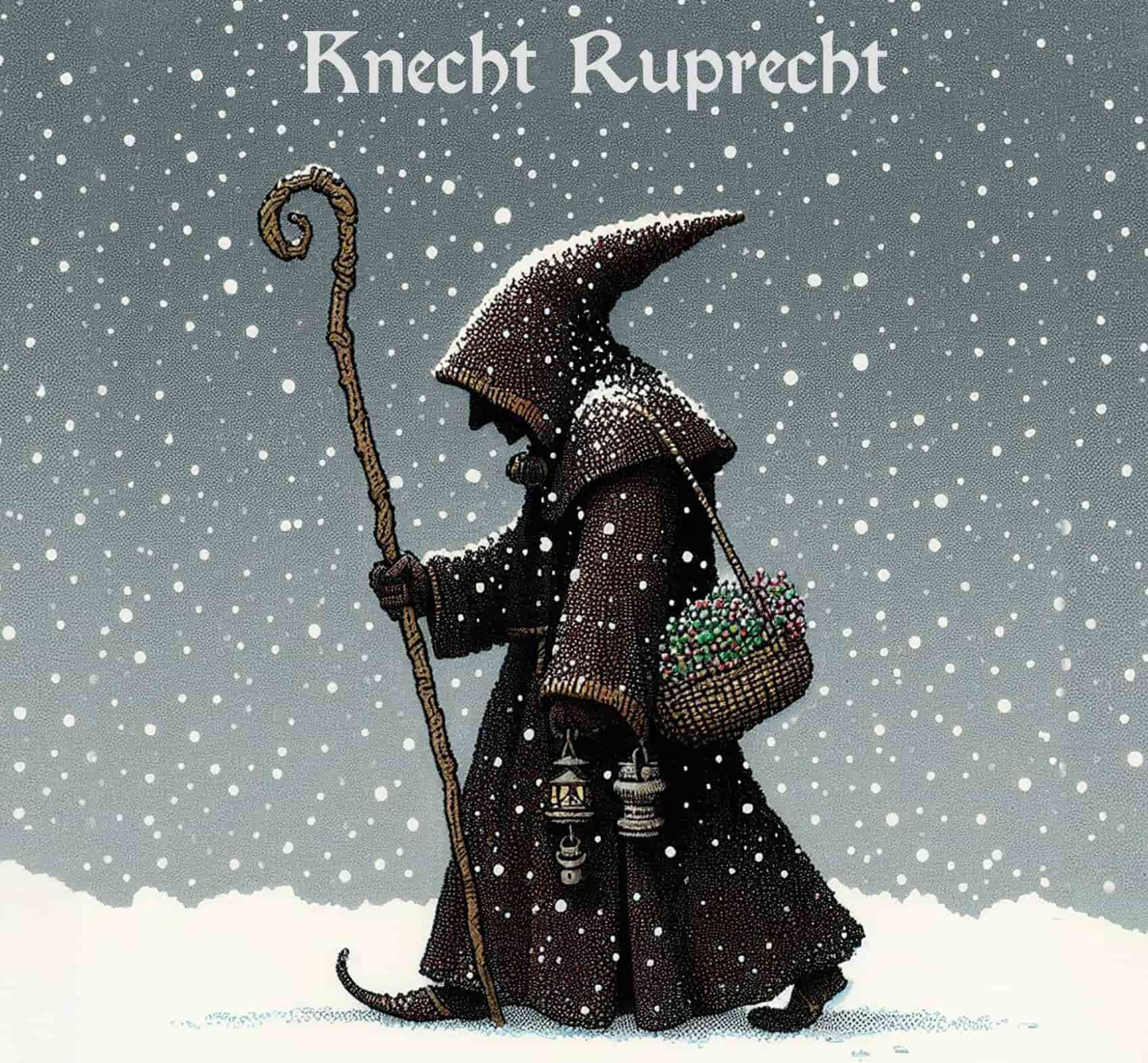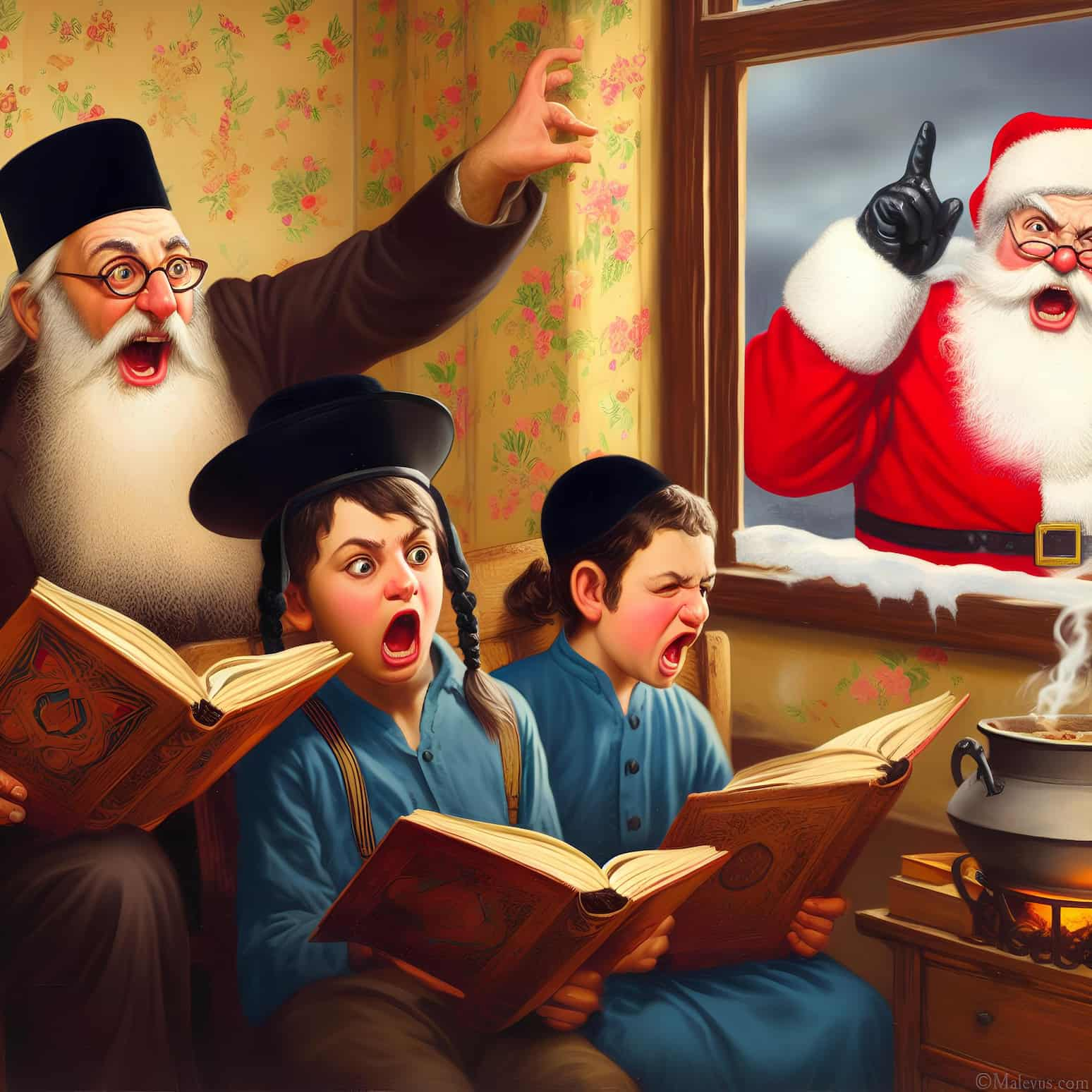In German folklore, Knecht Ruprecht (or Servant Rupert) is one of Saint Nicholas‘s traveling companions. His first documented appearance is in a Nuremberg Christmas parade from the 17th century. He is a Christmastime figure who brings gifts. A black or brown robe, a sack of ashes, and occasionally a white horse are common accessories in his depictions. Children are asked whether they can pray by Knecht Ruprecht, who rewards those who can with candy and ashes those who cannot. This character is well-known in Germany, where it is linked to pagan notions of the spirits of the home. The Krampus, who torments wayward youngsters, also travels with him in certain areas.
Knecht Ruprecht’s Role in Christmas
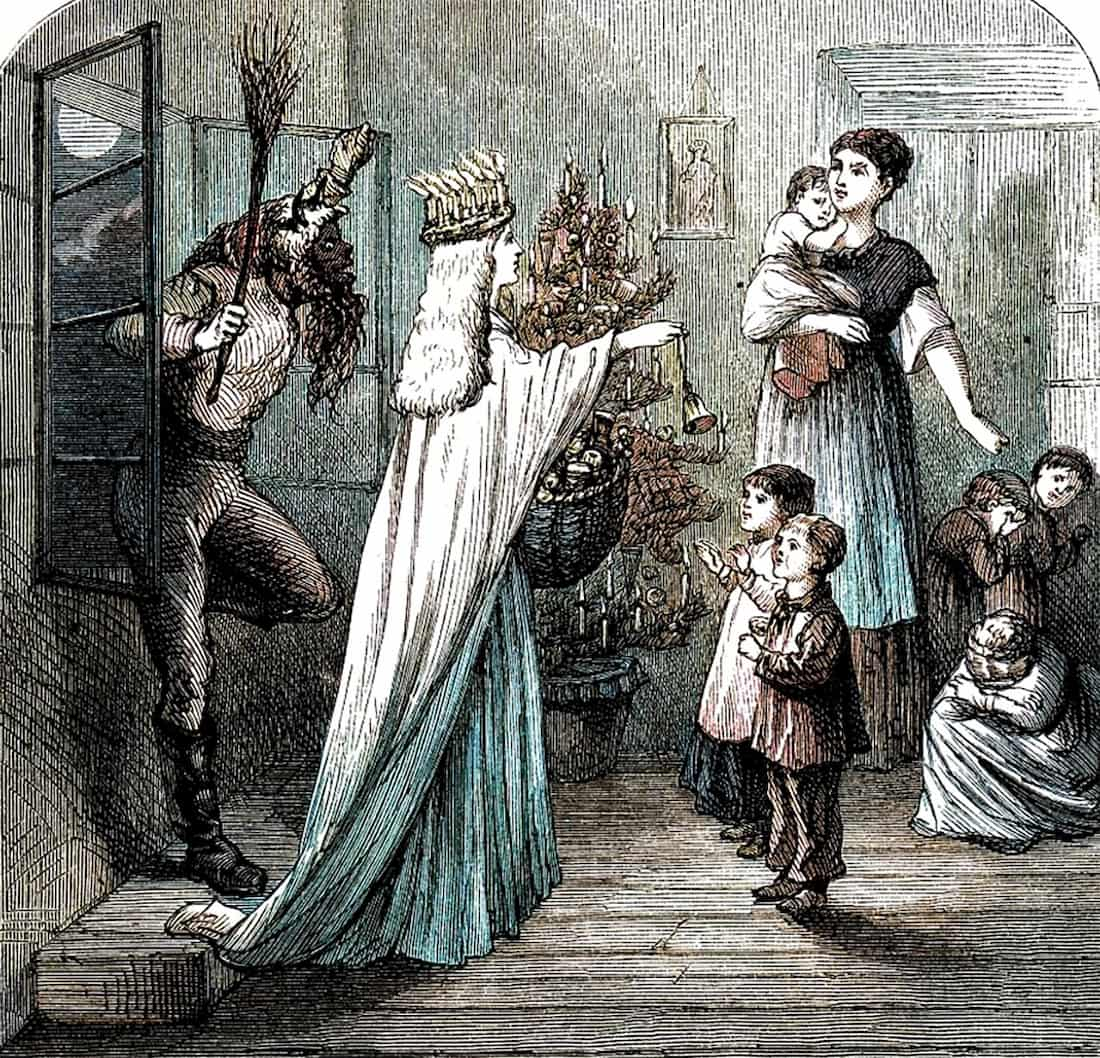
On the evening of December 5th, Saint Nicholas and his helper Knecht Ruprecht pay visits to the homes of children in northern and central Germany. Kids are supposedly beaten with Knecht Ruprecht’s sack of ashes if they can’t pray during Christmas, but they are given apples, almonds, and gingerbread if they can. In other tales, Ruprecht rewards good behavior with treats while punishing misbehavior with lumps of coal, rods, and stones.
He is similar to a French character called Pere Fouettard and another character named Hans Trapp, both of which also scare children around Christmastime.
His Appearance
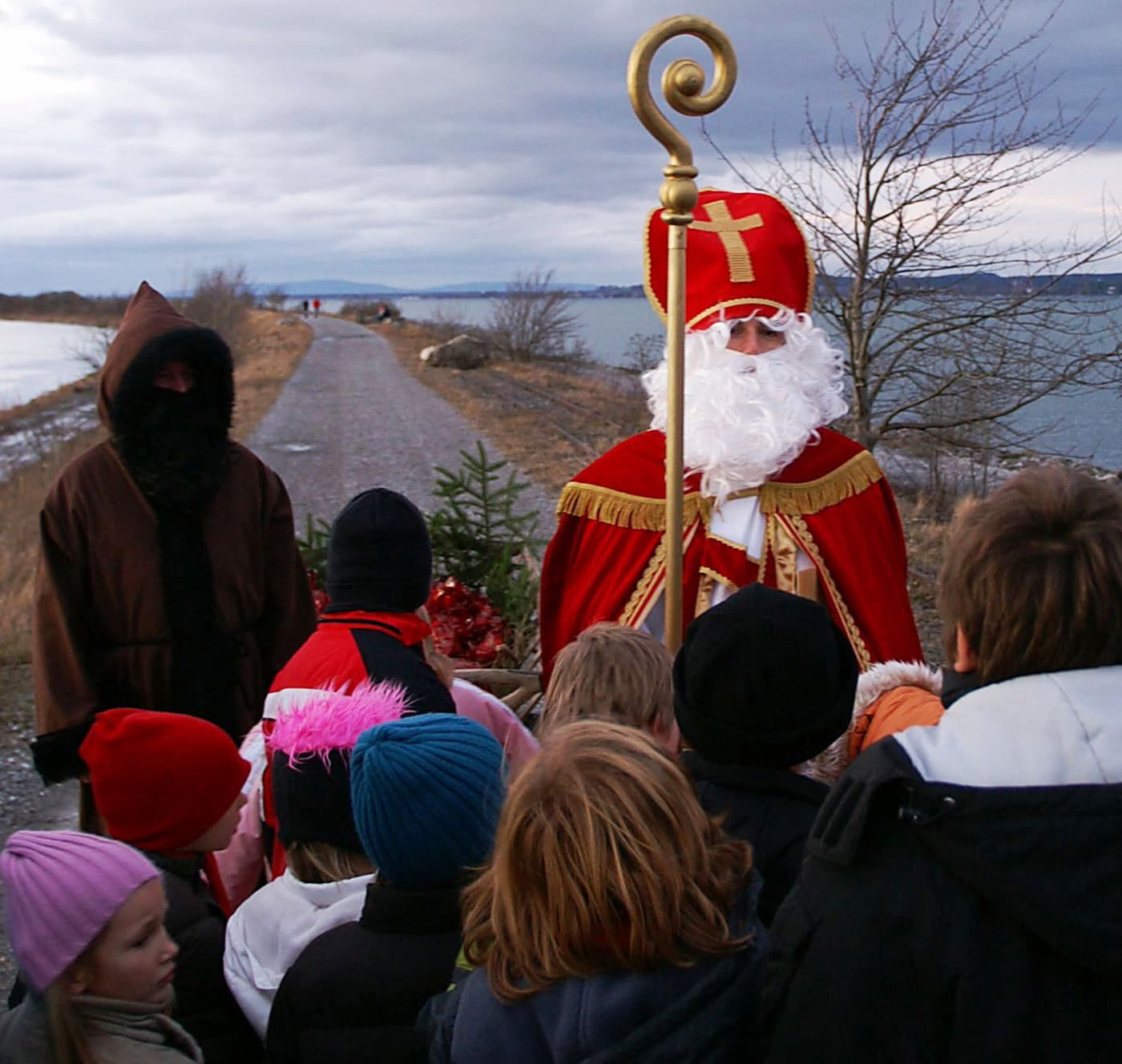
In the past, Knecht Ruprecht was commonly shown with a dark complexion (similar to Zwarte Piet in the Netherlands) and wore a brown or black robe. He would have a weapon like a birch switch (a flexible rod) or a walking stick at his belt and a basket full of treats like mandarin oranges, peanuts, chocolate bars, and gingerbread cookies.
His appearance in art has evolved throughout time, although he is often shown with long, shaggy hair and even horns. Depending on the region this metal character received many other names, albeit all similarly sounding.
Both Knecht Ruprecht and Krampus may be traced back to one of the pre-Christian Alpine traditions called Perchten. Frau Perchta was an ancient goddess, and the scary masks depicting her court were called Perchten (plural of Perchta).
This ritual was part of the pre-Christian holiday Twelfth Night to mark the coming of the epiphany. This was a winter expulsion ritual in the Alpine areas of Upper Bavaria, Austria, and South Tyrol. But it’s likely that both traditions have taken on new shapes throughout time.
Unlike Krampus, who emerges as a horde of demonic creatures, Ruprecht operates alone. Krampus employs birch switches as a weapon against misbehaving youngsters, but Knecht Ruprecht only gives them out. When compared to Krampus, Knecht Ruprecht is more common across the whole German-speaking world.
Origin of Knecht Ruprecht

The origins of Knecht Ruprecht lie in a long-standing practice connected to Saint Nicholas. While Saint Nicholas is shown in a favorable light, the other characters are always portrayed negatively. The dynamic between Saint Nicholas and his antithesis persists, much like the contrast between King David and Nabal the Fool or Carnival and Lent, which have major parallels with Saint Nicholas’s practices. One plays the role of an angelic messenger, while the other is a “tamed devil” who functions as an intimidating and punitive figure.
Origin of the Name
Knecht Ruprecht was not a customary name in the late Middle Ages; variations on the name were more common, such as Belsnickel, Beelzebub, Schmutzli, or even just devil. However, Knecht Ruprecht rose to prominence as the canon’s most recognizable name at some point in history for unknown reasons. This name likely originated in the Thuringian or Alpine regions. In fact, Ruprechtsburg Castle, which is located close to Zella-Mehlis, is a potential candidate for the origin of this name.
Origin of the Character
According to German linguist Jacob Grimm, “Ruprecht” uses the Old High German term “hruodperaht,” which means “glorious,” implying that he was either the servant (“Knecht”) of the goddess Frau Perchta or the Germanic deity Odin.
However, contemporary studies discredit such etymological origins. Current theory attributes the name’s etymology to Alpine folk art. Knecht Ruprecht might be derived from the word for “rough” or “rough man,” “Ruhperht,” (or Rupert) which links him to other figures from the Twelfth Night holiday who participate in the winter parade.
There is a link between Knecht Ruprecht, Twelfth Night, and the story of the German goddess Perchta. However, the exact beginnings are still unknown because of the lack of historical records.
History of Knecht Ruprecht
In Medieval Times
Knecht Ruprecht might also be descended from late-medieval scary figures that were crafted to scare children such as scarecrows. As a supplement to parental discipline, pamphlets with scary images pushing youngsters into piety have been widely distributed since the 16th century, notably in the 17th.
The “Kindlifresser” (Child Eater) was a popular theme for that. This type of character is most famously seen in Bern, Switzerland‘s Kindlifresserbrunnen (Child-Eater Fountain) today. The idea that the devil ate people’s souls was the inspiration for this figure.
This character, who was sometimes accompanied by another companion, would threaten disobedient youngsters with dire consequences in bloodcurdling lyrics. He attempted to jam children into a huge bag or basket, much like Knecht Ruprecht.
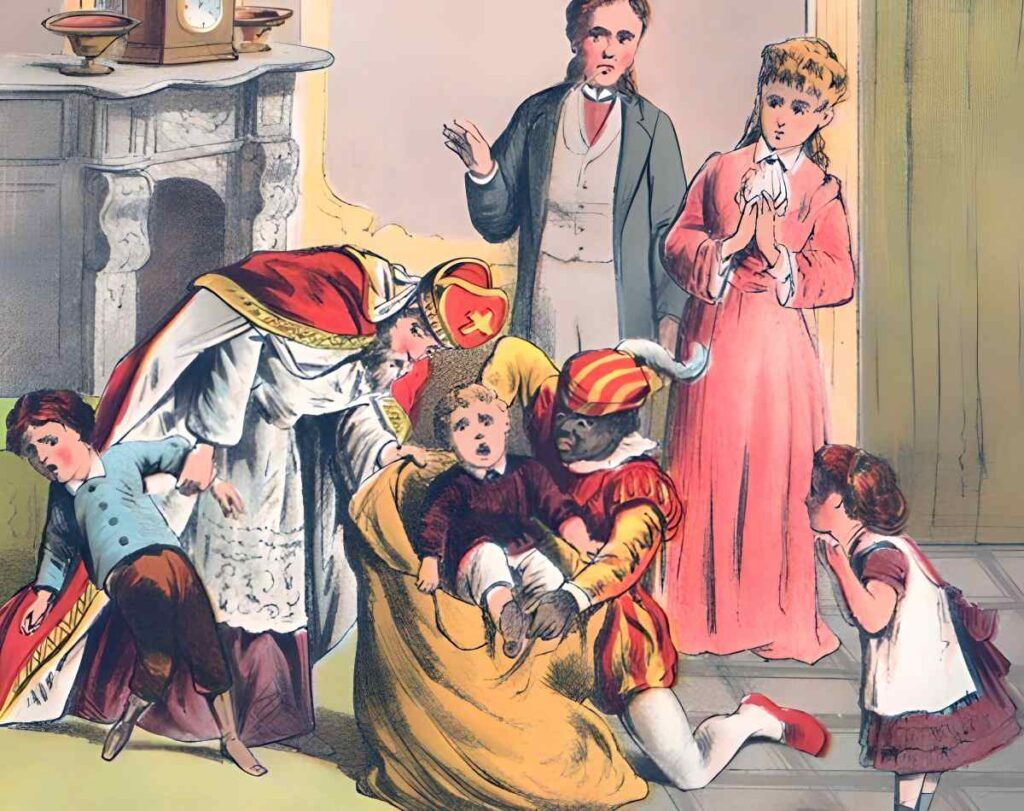
Knecht Ruprecht as a Holy Saint
In Protestant regions, Saint Nicholas was eventually supplanted by the Christ Child or Holy Christ, although the legend of Knecht Ruprecht remained. In certain areas, he even took over the roles of rewarder and punisher on his own. This figure, who was not really Saint Nicholas’s companion, is described in a piano composition by Robert Schumann.
In the 17th century, the initial conception of Knecht Ruprecht as a negative character or antagonist of Saint Nicholas quickly got confused, particularly in Protestant countries. Saint Nicholas and Ruprecht seem to have been combined in certain accounts, as seen by names like “Lord Saint Ruprecht“.
In this tradition, Knecht Ruprecht was supposedly named after a priest named Ruprecht who, according to a folklore tale involving dance, a miracle, and the Cölbigk district in 1020, was said to have cursed the heretical dancers of Cölbigk. Those dancers were actually farmers who, after imbibing heavily on beer, disrupted the Christmas celebration by singing and dancing loudly in front of the church.
A Literary and Creative Look at Knecht Ruprecht
- In the German dub of “The Simpsons,” Bart’s dog is known as Knecht Ruprecht instead of “Santa‘s Little Helper.”
- The butcher who slaughtered and pickled three children is revealed to be Saint Nicholas’s companion in “Le Miracle de Saint Nicolas,” a cantata written by French composer Guy Ropartz.
- Robert Schumann‘s “Album for the Young” (op. 68, No. 12) has a piano composition named “Knecht Ruprecht.”
- In Paula Dehmel‘s satirical children’s poetry “Knecht Ruprecht in Distress” from her 1919 book, an old Ruprecht bemoans the fact that all the kids now want for Christmas is to travel in an airship.
- There is an 1862 poem called “Knecht Ruprecht” by Theodor Storm. In this poem Knecht Ruprecht describes his activity in dialogue with the Christ Child: “From outside the forest, I come here; I must tell you; it is very Christmassy.” It is still common practice to recite the opening words of this poem aloud during the Advent season.


